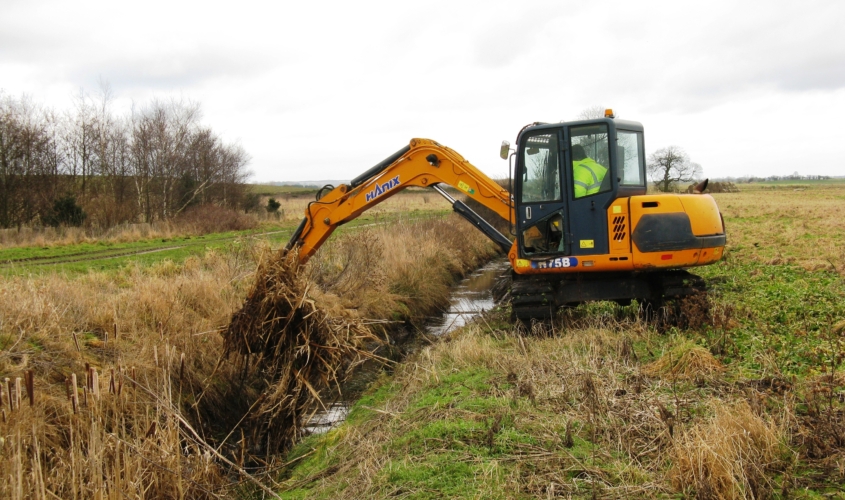With the unseasonably wet weather the UK has experienced this summer, BPA’s Landowner Services team is asking landowners to be aware of buried high pressure oil pipelines before clearing ditches.
Many farmers and landowners are taking the opportunity to clear ditches to help alleviate the potential for flooding or water damage. As part of BPA’s Know What’s Below campaign, the company regularly communicates with landowners to warn them of the risks to pipelines if the right procedures are not followed when clearing ditches along the company’s 1000km of buried oil pipelines.
Keeping watercourses well maintained benefits the community, particularly if an area experiences flooding as poorly maintained watercourses can be a nuisance, restrict access to property and can result in considerable expense and inconvenience for those that have been flooded.
Issues arise when landowners or contractors clear ditches with an excavator or other mechanical equipment as they have the potential to damage the buried high pressure oil pipelines. Farmers or other landowners looking to operate in the vicinity of buried pipelines should contact the pipeline operator in advance before starting any works.
To help ensure the best and safest outcomes for all, BPA’s lands team ask that those who are looking to undertake any works within three metres of a buried BPA pipeline:
- Give a minimum of 7 days-notice before works begin. This will ensure we can fully support you with your proposed activities.
- Never assume you can go ahead unless consent is given. BPA’s team will be on hand to support your work, however, works should not begin until permission is granted.
- Be aware pipeline depths vary under ditches and are not always protected with slabs. Be aware that pipeline depths vary across the country and can often be found only a metre below the surface, they are also seldom protected with concrete slabs.
- Seek advice as pipelines do not always run in straight lines between marker posts. Although posts are used to mark the location of a pipeline at a field boundary, not all pipelines run in straight lines between posts. We’re here to help mark out the exact location.
- Be aware that other infrastructure, such as cables, can be buried shallower than the pipeline. Often there are other potentially hazardous or safety critical infrastructure buried along the pipeline lengths, these can be found at even shallower depth to the pipeline.
Landowner’s responsibilities
It is also the landowner’s responsibility to ensure that contractors operating on their land comply with regulations. Working near pipelines without taking the correct precautions can have serious consequences.
BPA’s Landowner Services team is on hand and able to support landowners regarding any questions or queries that they may have. Our team is available 24/7 to offer advice and support landowners. Contact us via the website or call 0800 585 387

